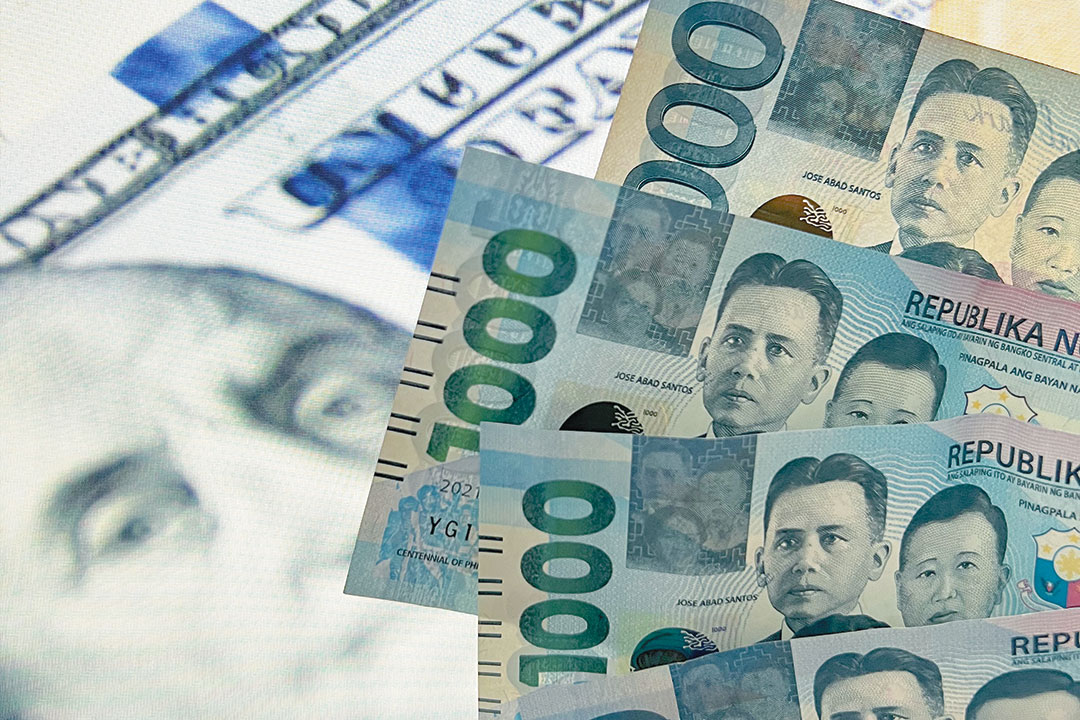




Philippines Trade Update: Trade trajectories trend along
 DOWNLOAD
DOWNLOAD

Policy Rate Updates: Double cut finale
 DOWNLOAD
DOWNLOAD

Monthly Economic Update: One for the road
 DOWNLOAD
DOWNLOAD


Peso inches up against the dollar before RRR cut, 56-day bill offer

The peso inched up against the dollar on Thursday ahead of the cut in banks’ reserve requirement ratios (RRR) and before the Bangko Sentral ng Pilipinas (BSP) starts offering 56-day bills.
The local currency closed at PHP 55.30 versus the dollar on Thursday, strengthening by two centavos from Tuesday’s PHP 55.32 finish, data from the Bankers Association of the Philippines’ website showed.
This was the peso’s strongest close since its PHP 55.25-per-dollar finish on May 8.
The local unit opened Thursday’s session at PHP 55.32 per dollar. Its weakest showing was at PHP 55.45, while its intraday best was at PHP 55.25 against the greenback.
Dollars traded dropped to USD 905.1 million on Thursday from the USD 1.029 billion seen on Tuesday.
The peso appreciated a day before the implementation of the reduction of banks’ RRR and the BSP’s first offer of 56-day bills, Rizal Commercial Banking Corp. Chief Economist Michael L. Ricafort said in a Viber message.
The BSP will cut the RRRs for universal and commercial banks and nonbank financial institutions with quasi-banking functions by 250 basis points (bps) to 9.5% on June 30.
It will also reduce the reserve ratio for digital banks by 200 bps to 6% and will cut by 100 bps the RRR for thrift banks, and rural and cooperative banks to 2% and 1%, respectively.
The central bank will also offer 56-day securities on June 30, along with the auction of the 28-day debt, to mop up excess liquidity in the financial system
Mr. Ricafort added that lower global crude oil prices recently also supported the peso.
Brent crude futures declined 26 cents or 0.4% to USD 73.77 a barrel by 0647 GMT, Reuters reported. US West Texas Intermediate crude futures slipped by 22 cents or 0.3% to USD 69.34 a barrel.
For Friday, Mr. Ricafort sees the peso trading from PHP 55.20 to PHP 55.40 a dollar.
Meanwhile, the US dollar touched a more than seven-month high against the yen on Thursday after the heads of the respective central banks reaffirmed the divergence in policy, Reuters reported.
Federal Reserve Chair Jerome H. Powell — speaking on a panel with European Central Bank President Christine Lagarde, Bank of Japan (BoJ) Governor Kazuo Ueda and Bank of England Governor Andrew Bailey — noted that two rate rises were likely this year, and did not rule out the possibility of a hike in July.
By contrast, Ueda reiterated that “there’s still some distance to go” in sustainably achieving 2% inflation accompanied by sufficient wage growth, the conditions the BoJ has set for considering an exit from ultra-easy stimulus.
The dollar’s surge of as much as 11.6% since late March to reach 144.71 yen for the first time since Nov. 10 has prompted increased verbal warnings from Japanese government officials this week that the move may have been too rapid.
The ministry of finance and BoJ intervened in the currency market last autumn when the dollar strengthened beyond 145 yen.
The dollar was last down 0.1% at 144.24.
The US dollar index — which measures the currency against six major peers, including the yen, euro and sterling — was flat at 102.94. — A.M.C. Sy with Reuters
This article originally appeared on bworldonline.com





 By BusinessWorld
By BusinessWorld